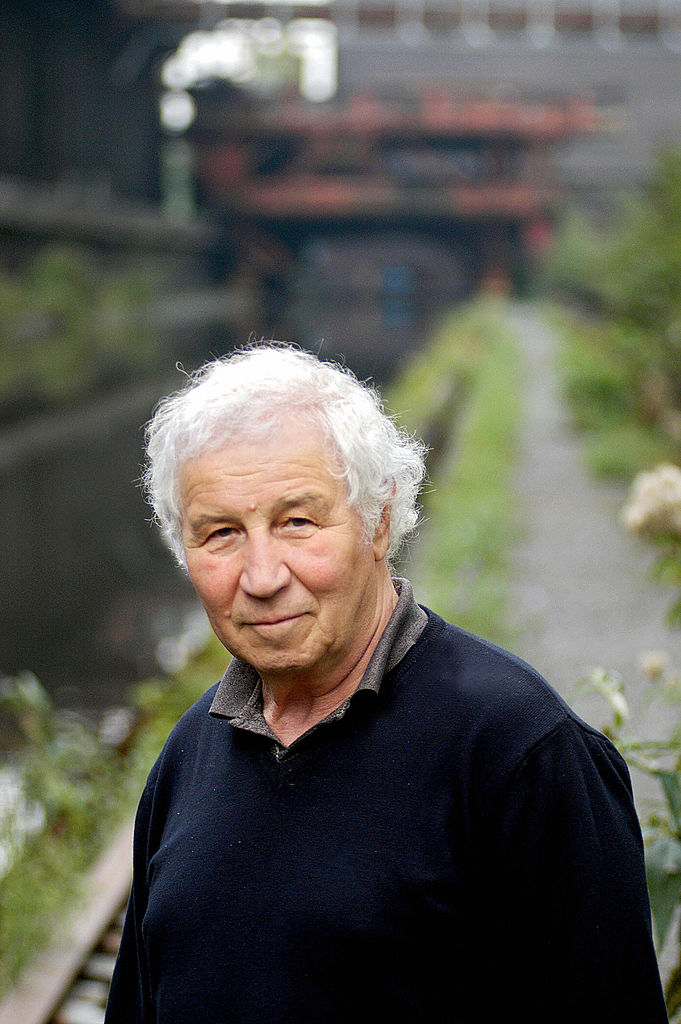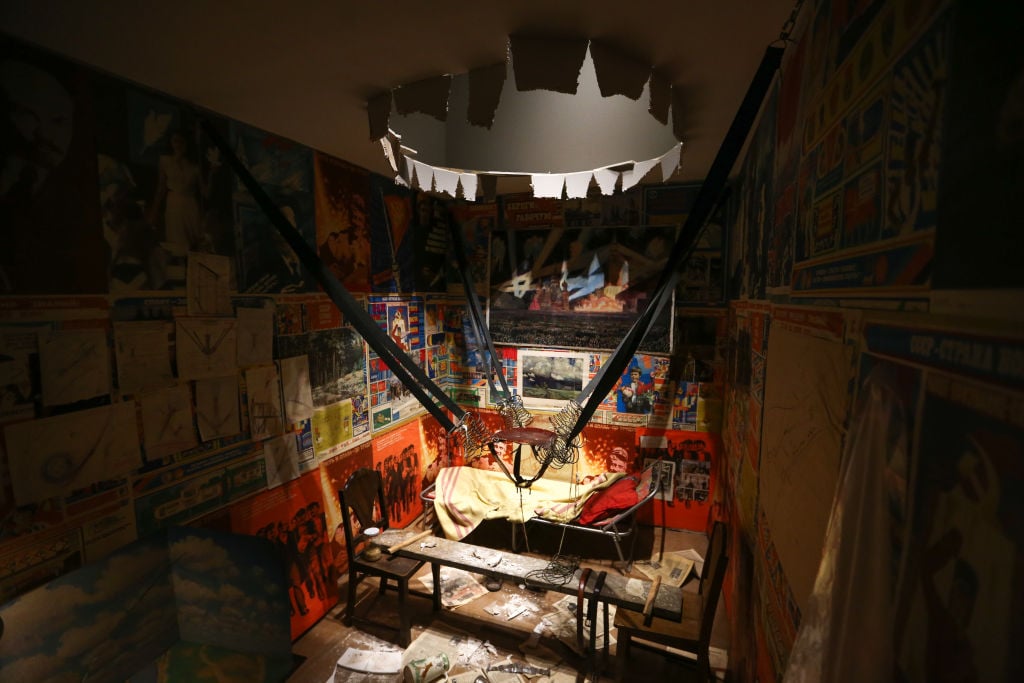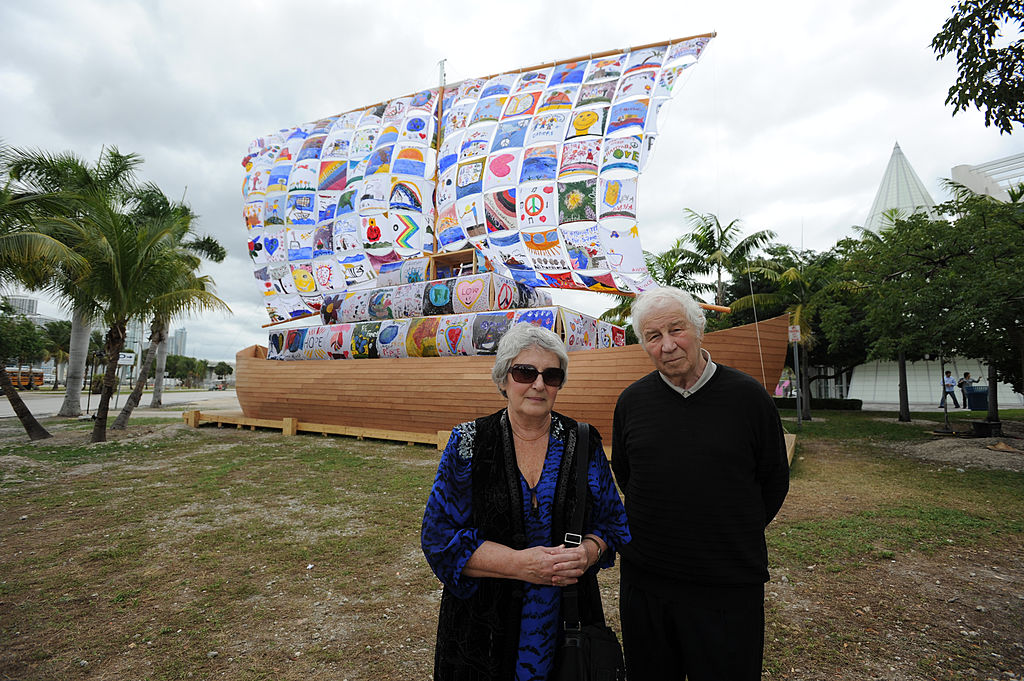People
Ilya Kabakov, the Ukrainian American Conceptual Artist Who Lived Through Totalitarianism But Dreamed of Utopia, Has Died at 89
The artist died peacefully during the night on Saturday, surrounded by his family.

The artist died peacefully during the night on Saturday, surrounded by his family.

Jo Lawson-Tancred

The Ukrainian American conceptual artist Ilya Kabakov died during the night on Saturday, May 27 at the age of 89, his family confirmed.
Taking his experiences of life under the Soviet Union as his subject, Kabakov’s works never shied from themes of totalitarian suppression and thwarted dreams but were always underscored by a fantastical quality, offering hope for a more utopian future. In the last three decades of his life, he formed a close artistic partnership with his wife, Emilia.
Since 1983, Kabakov has been particularly celebrated for his “total installations,” a genre of fully-immersive environments that he pioneered. Together, the Kabakovs have created over 200 of these large-scale works, which often convey dramatic narratives via a cast of fictional characters.
The earliest and best known example is The Man Who Flew Into Space From His Apartment (1985), produced while Kabakov was still working out of his secret attic studio in Moscow. The work recreates a typically shabby bedroom in a communal apartment, a kind of Soviet residence that accommodated multiple households. The small, oppressive space has propaganda photos tacked onto the wall, exemplary of the artist’s flare for establishing a specific mood and place.

Ilya Kabakov, The Man Who Flew Into Space From His Apartment (1985). Photo by Igor Russak/NurPhoto via Getty Images.
Surprisingly, however, viewers are able to see a large hole in the ceiling. Accompanying texts give the accounts of several neighbors, who recall how the former resident Nikolaev dreamed of space travel and escaping his downtrodden existence. It would appear that in the end he succeeded, catapulting himself away from this grim reality into a faraway, celestial realm that audiences are left to imagine.
When the work debuted at Ronald Feldman Gallery in 1988, it was an immediate sensation, cementing Kabakov’s reputation as one of history’s most important Soviet artists.
Ilya Iosifovich Kabakov was born in the city of Dnipropetrovsk in 1933, when Ukraine was part of the former USSR. His interest in art came to him naturally as a young boy, and even when he was forced to evacuate to Samarkand, Uzbekistan, during World War II, he continued to attend the Leningrad Academy of Art. At the age of 18, he enrolled at the Surikov Art Institute in Moscow to study graphic design and illustration. After joining the official Union of Soviet Artists in 1959, Kabakov made a living producing drawings for children’s books in the state-sanctioned style of Socialist Realism.
In private, however, he became associated with an unofficial, underground group of conceptual artists, the Stretensy Boulevard Group, and met like-minded thinkers like the artists Erik Bulatov and Oleg Vassiliev and the philosopher and critic Boris Groys. Around this time, he started making work that satirized Soviet society and experimented with new media like assemblage. After some decades, the worlds he was building started to leap off the page and, in 1983, he began making his famous installations.
Eventually, his works began to be shown in the West, where they offered early glimpses into life behind the iron curtain, starting with a 1985 exhibition at the Bern Kunsthalle. In 1987, he was able to move to Austria for a fellowship at the Graz Kunstverein and just a year later he resettled in the U.S.

Artists Ilya and Emilia Kabakov pose with their work The Ship of Tolerance at Miami Childrens Museum on December 3, 2011 in Miami, Florida. Photo: Larry Marano/Getty Images.
“Meeting Ilya when he immigrated from Russia to Austria made a deep impression on me,” his long-time dealer Thaddaeus Ropac told Artnet News. “I learnt so much from him about conceptual art, and the simple power of his installations were truly groundbreaking. I was privileged to have worked with him over the course of more than 35 years.”
Shortly after arriving in New York, buoyed by the buzz around his Ronald Feldman Gallery show, Kabakov met the curator and dealer Emilia Kanevsky (née Lekach). He had known her as a child since she was his niece. They married in 1992, and enjoyed over three decades of fruitful collaboration at their home and studio on Long Island. Highlights of this partnership have included Documenta in 1992, their representation of Russia at the Venice Biennale in 1993, the inclusion of The Red Pavilion at the 1997 Whitney Biennial, one of the first solo surveys dedicated to a living artist at the State Hermitage Museum in St. Petersburg in 2004, and major retrospectives at both Tate Modern and the Hirshhorn in 2017.
Philanthropically minded, the Kabakovs also launched the humanitarian art project The Ship of Tolerance, a vessel whose sails are adorned with the drawings of children. It was first conceived in Siwa, Egypt, but has since been at the Venice Biennale, the Sharjah Biennial, the Havana Biennial, as well as institutions in Rome, London, Chicago and Zug in Switzerland.
Kabakov is survived by his wife, his daughter Galina, his grandchildren Joseph, Orliana, Aurora, Anja and his great-grandchildren, Anastasia and Maxim. A statement released by his family described Kabakov as a “great artist, philosopher, beloved husband, treasured father, and adored grandfather” and confirmed that he died peacefully, “surrounded by his loved ones.” A public memorial will be announced shortly.
More Trending Stories:
A Sculpture Depicting King Tut as a Black Man Is Sparking International Outrage